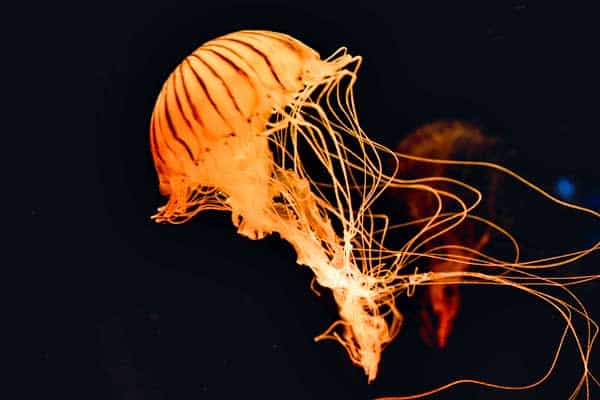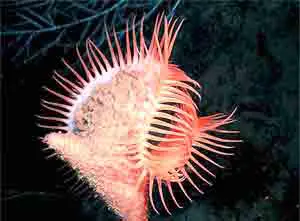Ever wondered what kind of animals live in the Arctic? We find some very beautiful white animals in the Arctic areas.
It’s the area around the North Pole where the weather is ice cold.
We find some of the most beautiful animals here. With snow-white fur and puffy fur to keep them warm!
Let’s get started!
Table of Contents
Let’s look at some amazing facts about these creatures that manage to live in the coldest regions of the earth.
Arctic Terrestrial Animals (land animals)

Let’s start by looking at some of the land animals that live in these extreme cold areas.
The Polar Bear is probably the most famous of them all. And you will see why.
Polar Bears
One of the most famous Arctic animals is the Polar Bears. They live in the Arctic lowlands near the sea where they can catch fish and jump in the water.
They are amazing swimmers!
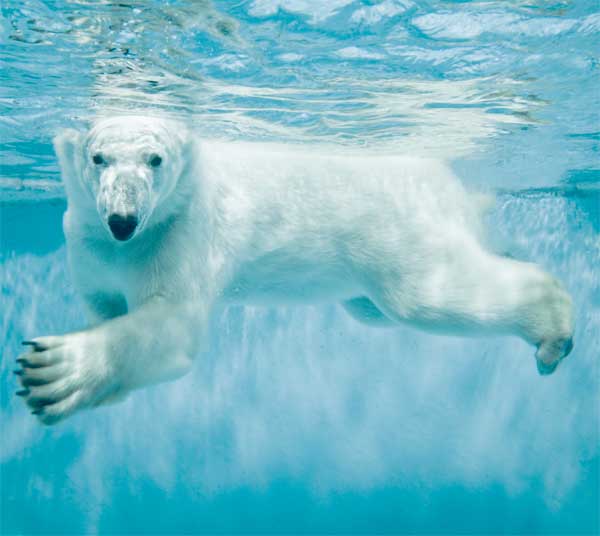
They look really majestic when they sit on the ice.
They can run faster than you even though it is one of the largest bears we have. They can reach a top speed of around 25 mph (km/h).
That’s VERY fast!

Arctic Hare
The Arctic hare is one of the masters of camouflage.
With its snow-white fur, it can disguise itself completely and stay safe from predators.
Camouflaging plays an important role for many of the Arctic animals. It’s a good way to be able to blend in with the background to either wait for prey to come by or in order to avoid becoming somebody else’s prey.
We have written another article with 36 impressive animals that can completely camouflage themselves.
That article also contains a lot of cool Arctic animals.
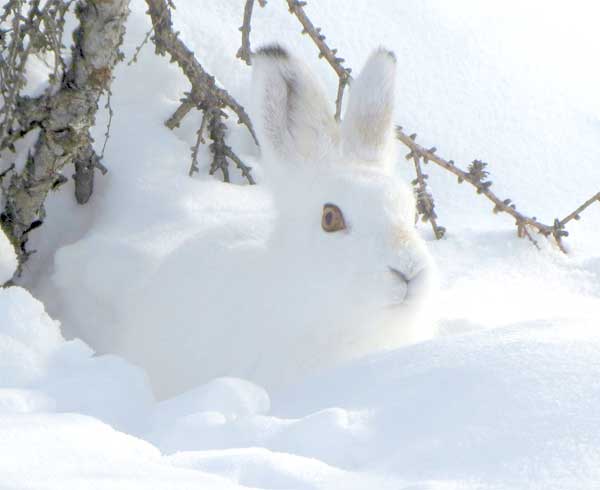
Arctic Wolf
This is a rare animal we find in Greenland.
It has also been found in northern parts of Norway around the Arctic tundra but it has been hunted down here. So you will have the best chance of finding the Arctic Wolf in Canada.
It also has beautiful white fur that keeps it warm during the winter. Much like Snow Fox.
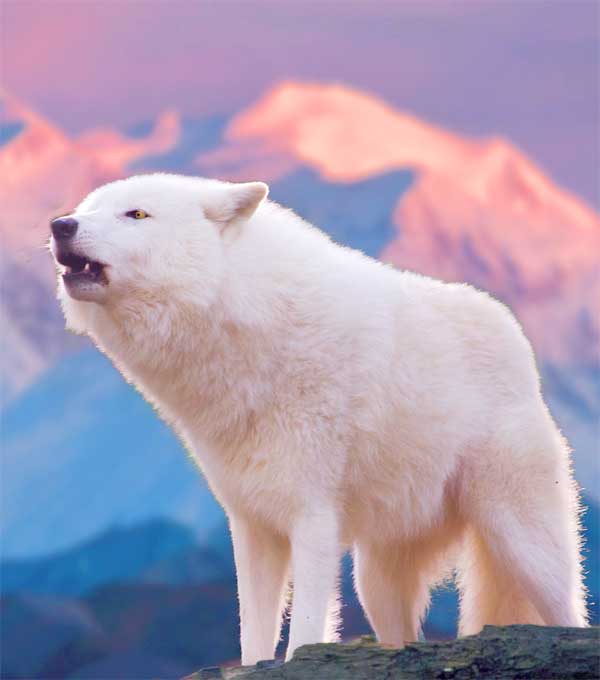
Reindeer
Reindeers are probably most known for helping Santa pull the sleigh. They are majestic creatures with beautiful antlers and strong muscles.
They have thick light brown fur and they live in the wild forests of Norway, Sweden, Alaska, Russia, Greenland, and Asia.
They are also called Caribou in Northern America and they often live in herds of up to 1,000,000 animals in Russia.
They will typically be found in the snowy mountains.
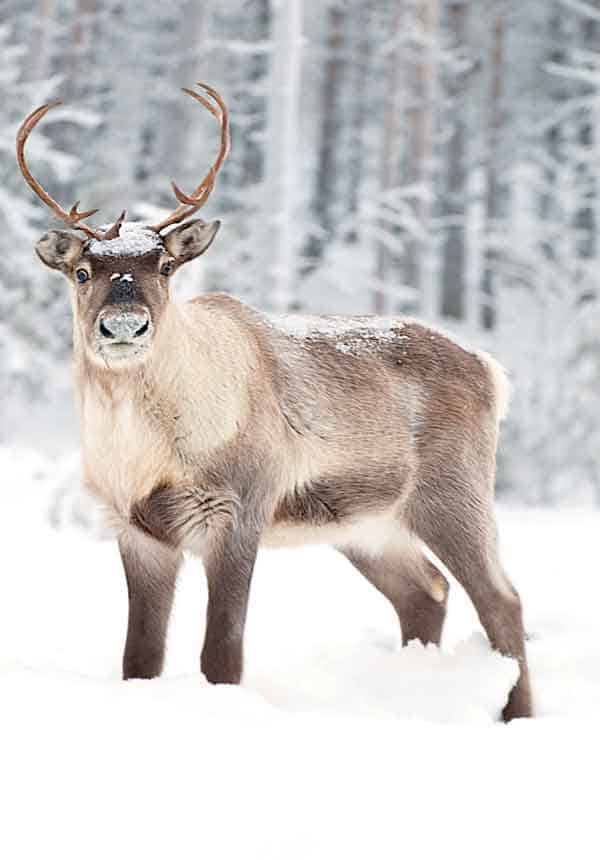
Moose
The Moose is a gigantic animal. They are quite dangerous for us humans but not for the reason you would think.
I have lived in Norway for a year and it’s common knowledge up there that a Moose can be dangerous. Here’s what happens.
If you meet a Moose in your car you need to avoid driving into it. Because you will only hit the legs of the Moose and the rest of the body will hit the windshield of the car and you will have around 1,200 lbs (540 kilograms) of animals smashing into the car.
Not something you are likely to survive!
Here are some pictures to show you just how enormous these monsters with antlers really are:
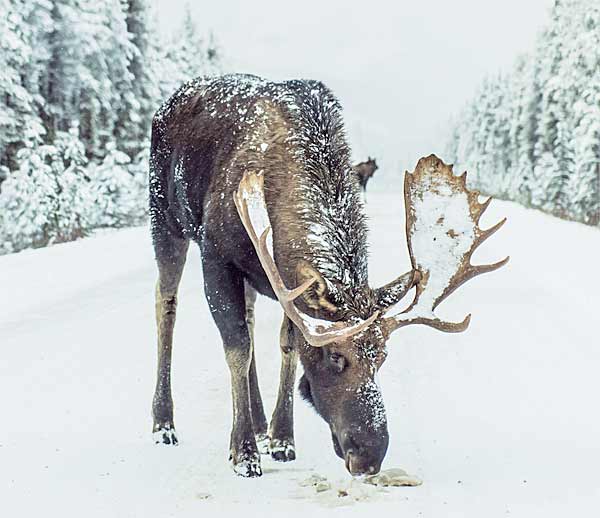
They have a special head shape. Much different from Deers and more like a horse.

Musk Ox
Musk Oxes look very robust and strong.
And they are.
They have an extremely thick coat and they can weigh up to 900 lbs (400 kilograms) so they are actually not as big as the Moose above.
It is called “Umingmak” in Nunavut which is an old Canadian language. That means “the bearded one” And you understand why. It looks like the grand old grandpa of all cows and ox.
They live primarily in Greenland, Siberia, and Canada.
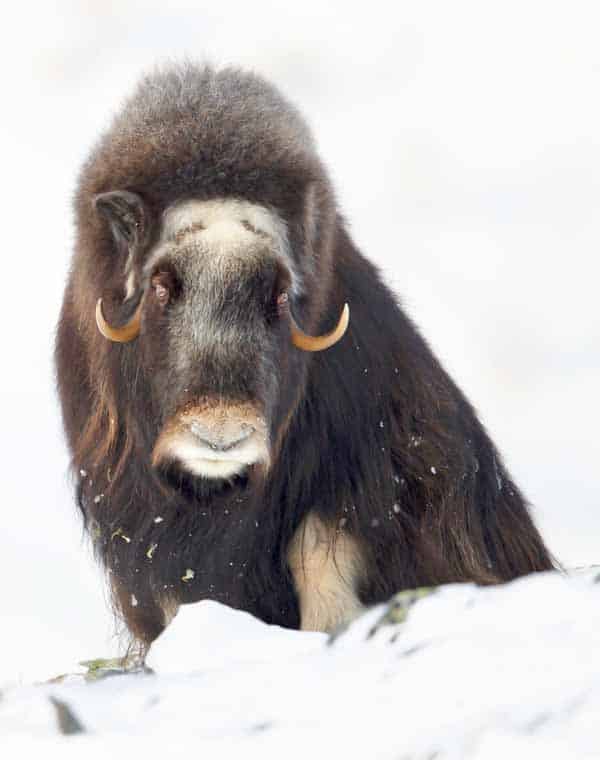
Otters
Otters are fun. They will often be seen playing with each other in the water. They will sometimes lay on their backs in the water and look up in the air. That looks super cute.
They are known to hold hands when they sleep (inside the water!) in order to not drift apart.
You can read more about that and sleeping habits of other animals here – it’ looks extremely cute.

Here you can see the Otter swimming on the back.
It will often do this in pairs. They are very social animals and they love to float side by side in the cold rivers and ocean of the Arctic tundra.

Wolverine
The Wolverine has many names: Glutton, Skunk, Bear, Carcajou, etc.
It is a rather small animal that only weighs around 40 lbs (18 kilograms) and they are mostly found around Canada, Alaska, and the Nordic countries.
They look like small bears and that’s also why some people refer to them as bears.
They eat whatever they can find. Typically the leftovers from another predator. This is also where it got the nickname “Glutton”.
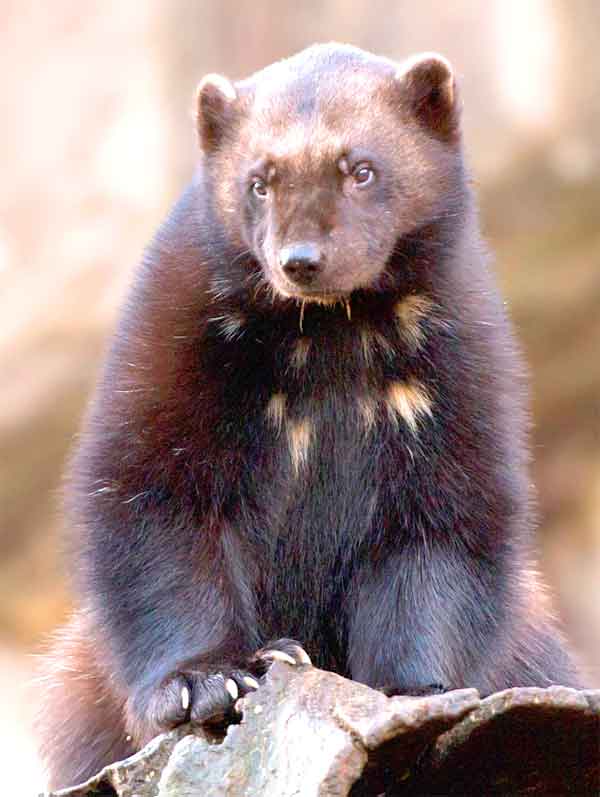
Snow Foxes
Snow Foxes are becoming increasingly rare.
They are very beautiful and they change the color of the fur from summer to winter.
A very pretty make-over!
Here you can see a Snow Fox in the summer where the fur is darker in order for the animals to camouflage themselves against the rocks and trees.

And here’s a Snow Fox with its winter coat. Very white and almost shiny.
As you can see, the Snow Fox becomes almost invisible in the white snow when it lays flat on the ground. Only the cute little eyes give it away.

Lemmings
The Lemming is a small rodent with a short tail. It’s closely related to rats, hamsters, and other smaller rodents.
They are around 5-6 inches (15 cm) and they have soft brown or dark-brown fur. They will eat mostly grass and moss and in the snow, they will find berries and roots.
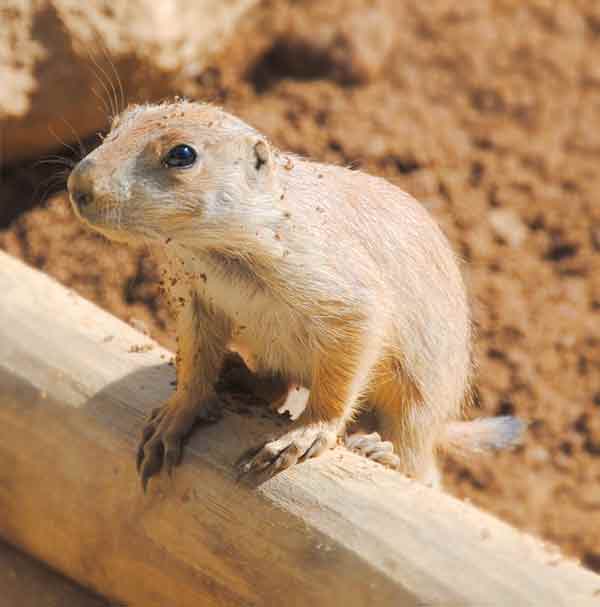
Arctic Aquatic Animals (Sea Animals)
Narwhal
The Narwhales are very special.
They have the characteristic horn in the front that makes them look like no other sea animal.
They are also called the unicorn of the sea. The horn-like spike is actually more like a long tooth that grows from the upper lip.

Seals
There are primarily 6 types of seals in the Arctic areas:
- Ringed Seals
- Spotted Seals
- Ribbon Seals
- Hooded Seals
- Bearded Seals
- Harp Seals
Here are some pictures of the seals of the Arctic ocean. They differ a lot in size and weight.
Let’s start by taking a look at this cute Spotted Seal.
It has spots all over the body except for the head. It also has long whiskers just like the other seal species.

Here’s another picture of the Spotted Seal that lives around the Arctic area.
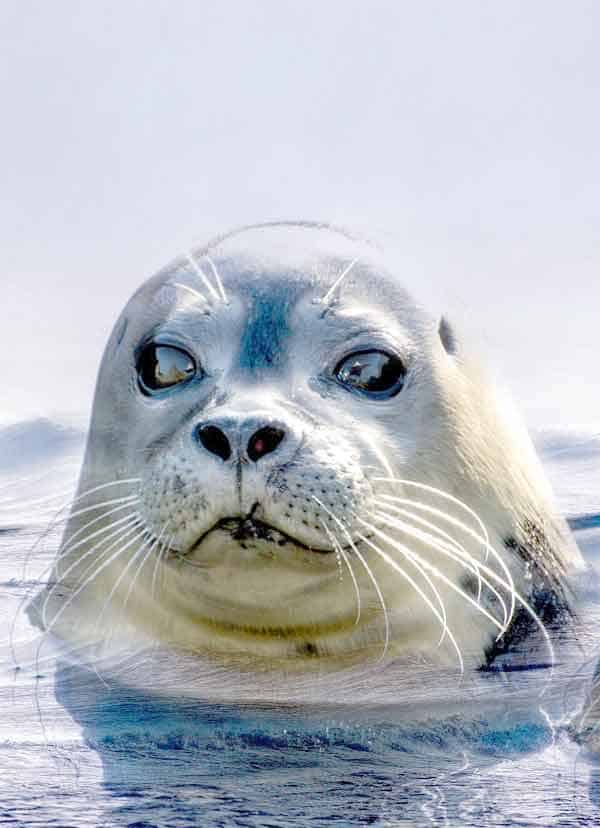
The next picture is a Harp Seal.
They have silver-grey coats with darker spots. They are also called SaddleBack Seals.
They weigh around 300 lbs (140 kilograms) and they are about 6 feet (1,9 meters) long. They can withstand very low temperatures and they are great swimmers.

Walruses
The Walruses are huge. They can weigh up to 2,200 pounds (1 ton).
The tusks can be up to 1.6 feet (50 cm) and they are very impressive. Much bigger than most people think.
Despite the big size and its rather clumsy style on land, the Walrus is fast in the water. It’s a fast swimmer. It feeds on snails and clams.

Orca (Killer Whales)
Killer whales are huge predators. Hence the name.
They will feed on other sea creatures like fish, seals or even Dolphins.
They are very clever which is also why you will often see them perform complicated tasks and tricks in marine parks. They can do most of the things you can teach a Dolphin.
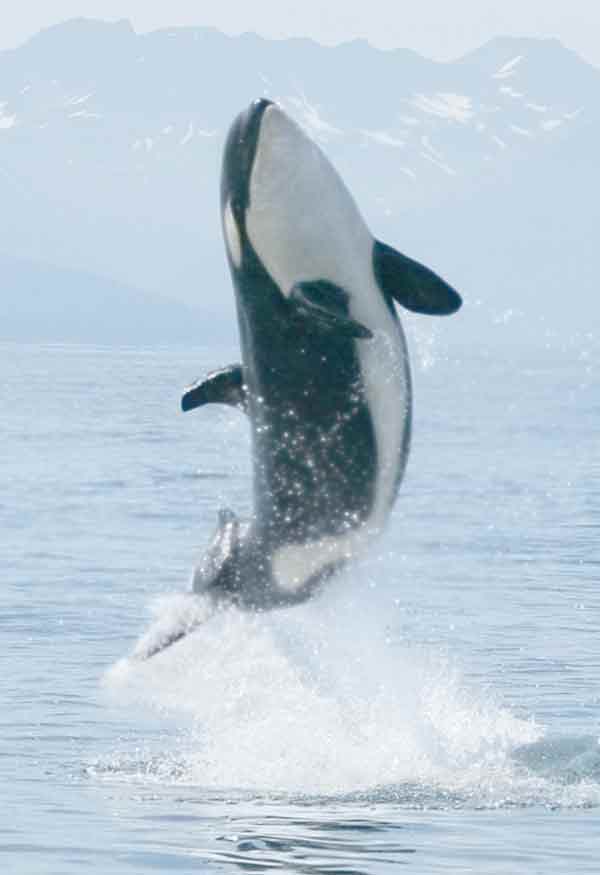
Humpback Whales
One of the giants of the sea is found in the Arctic Ocean. They are huge whales with large tails and they can jump high up in the air to impress everybody. If you don’t see them you will definitely hear them land!
They can weigh up to 33 short tons (30 metric tons) and they will be up to 52 feet (16 meters). That makes them one of the largest whales on the planet.
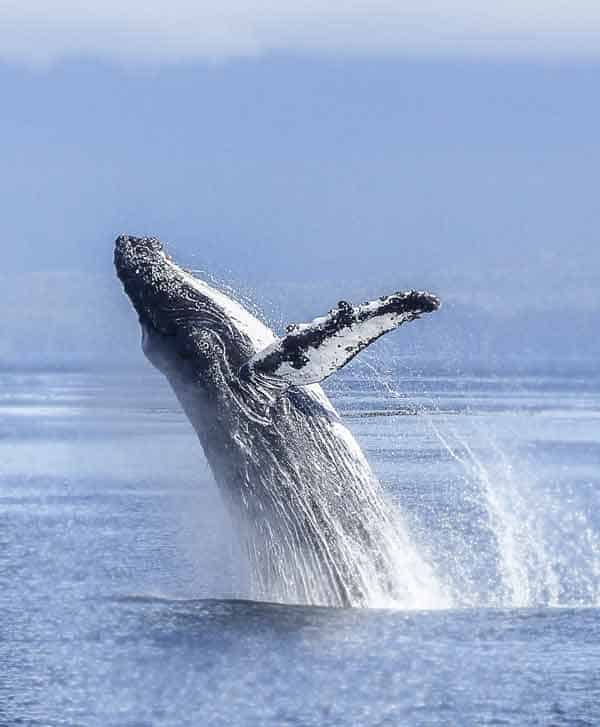
Blue Whales
98 feet (30 meters). That’s the impressive size of this sea monster.
They can weigh up to 190 short tons (170-meter tons) and they are the largest animals know to have EVER existed! It’s larger than any dinosaur or prehistoric animal we have documented to have been around.
That’s an impressive record.
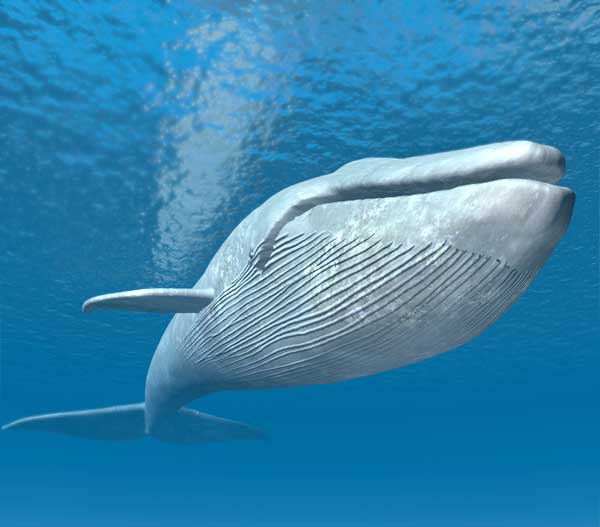
Other whales in the Arctic sea are Fin Whales, Greenland Whales, and Mink Whales.
Arctic Birds

We also find a lot of interesting birds around the Arctic Tundra. Let’s take a look a some of these tough birds that can withstand the cold air.
Puffin Birds
This bird is very famous for its colorful beak. It has very strong red colors and it also has a very bright yellow spot.
This amazingly beautiful bird is actually the national bird of the Faroe Islands.

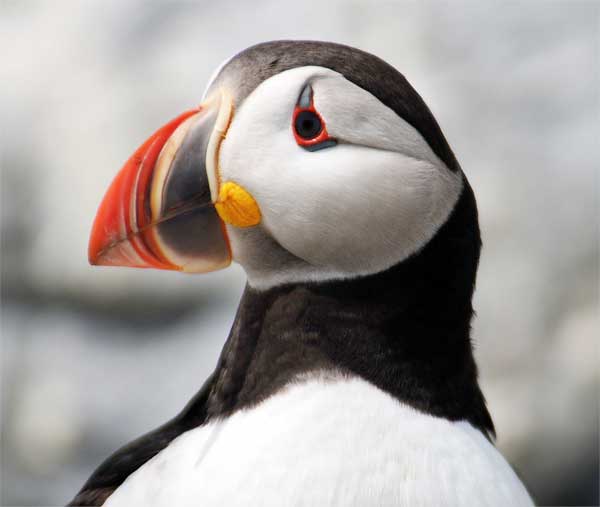
Snowy Owls
Snowy Owls are very pretty with a completely white set of feathers.
They eat mice and other smaller creeps and insects they can catch.
They have amazing hearing due to the special form of their heads. The round areas outside the eyeballs help them pick up sounds from afar.

See how intense those yellow eyes are.
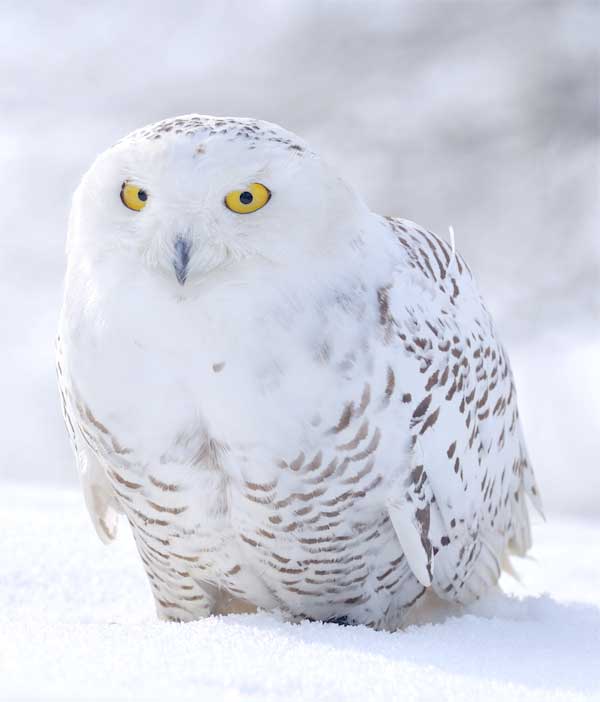
The wings are larger than you would think and they have pretty dark spots all over.
This also helps it camouflage itself in trees.
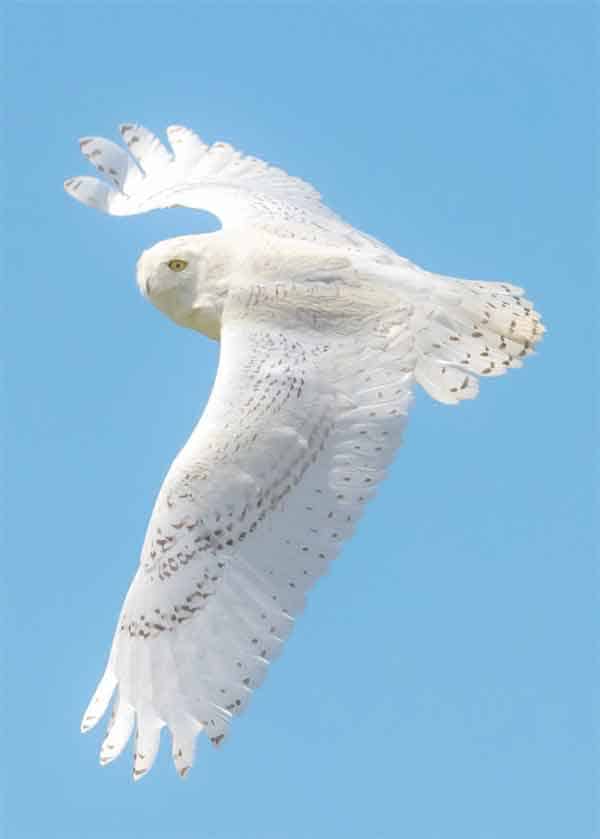
Bald Eagle
The Bald Eagle can often be spotted at the Arctic area.
Otherwise, it will be found in Northern America. It can fly up to Alaska and all the way down to Mexico. It’s a huge bird with a wingspan of 7,5 feet (228 cm) so it can fly long distances.
Another impressive fact about this huge bird is the lifespan. It can live up to 20 years in the wild.
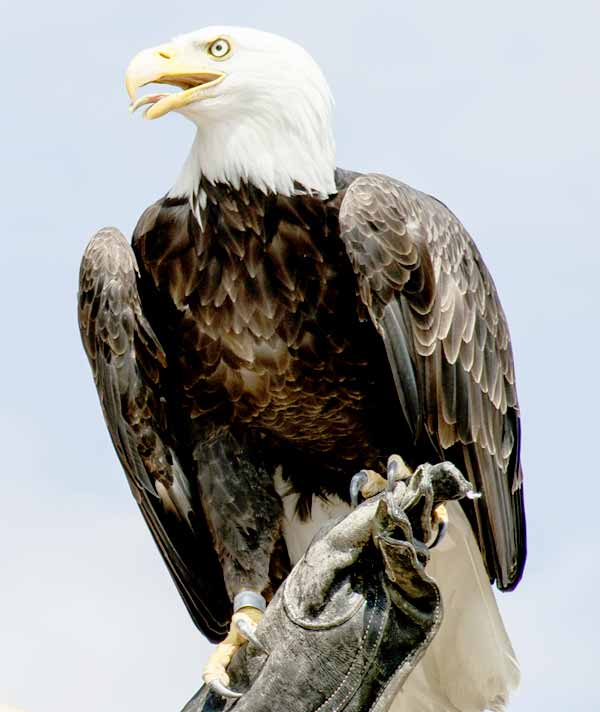
We also find Geese in the Arctic area. Specifically the Snow Goose, Barnacle Goose, and the Canada Goose.
Other Arctic birds include:
- Arctic Terns
- Kittiwakes
- Fulmars
- King Eiders
- Little Auks
- Ivory Gulls
- Ptarmigans
- Turnstones
- Long-tailed Ducks
- Iceland Gulls
- Red Knots
- Buff-breasted Sandpipers
- Arctic Warblers
- Little Stints
Baby Animals From The Arctics
Some of the babies of these creatures are super cute.
They are white and furry like their parents and this makes them look puffy and cute.
Polar Bear Cubs
The cubs, as the babies of Polar Bears are called, are super cute. Maybe the cutest animals you find, if you ask me.
They look like your Teddybear because they are soft and round.
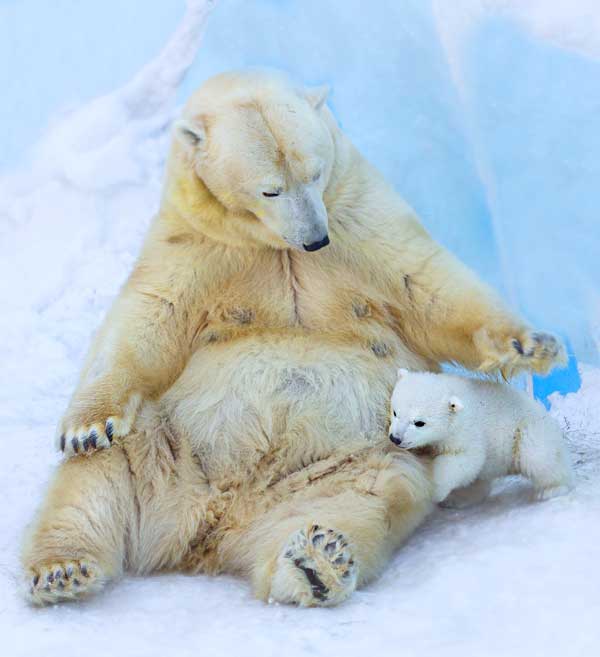
Check out this little fella.
It’s ready to explore the world of ice and snow.
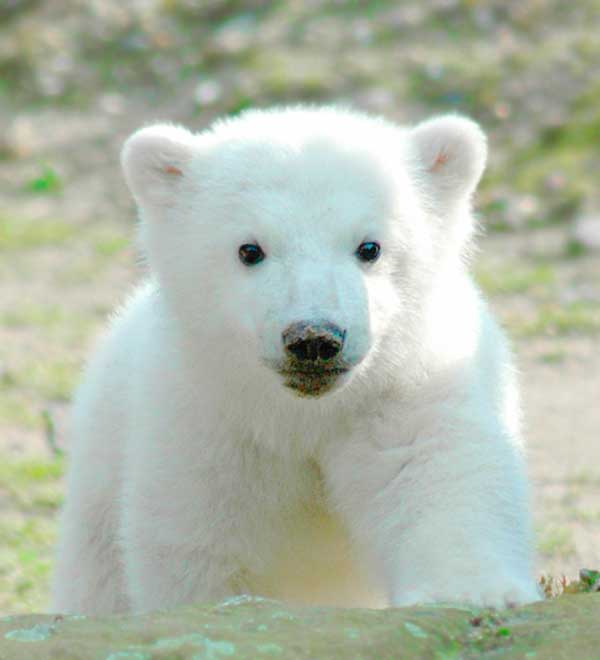
Seal Pups
The first seal pup below is a Harp Seal.
They can be almost white as pups but when they grow up they get a much darker color with a silver-grey coat.
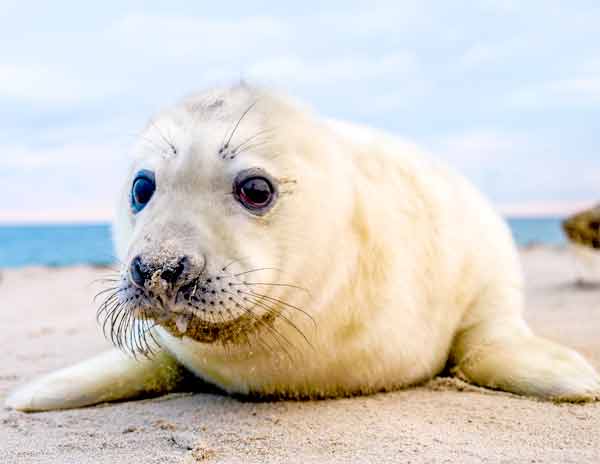
This next one is also a Harp Seal Pup.
So cute with those big dark eyes!

Baby Snow Fox
The Snow Fox cubs are curious and cute little guys.
This cub is wearing its summer coat. In the winter the fur changes to white in order to match the snow.
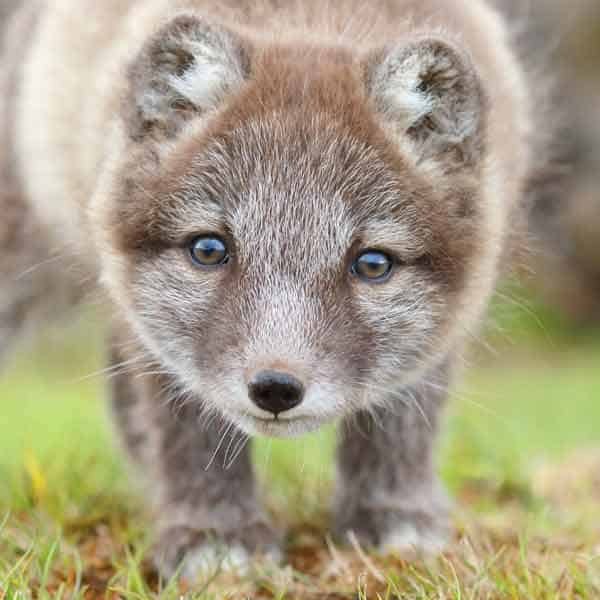
Otter Pup
What about this little Otter pup?
They are blind for the first month and after two months they will jump in the water and learn to swim.
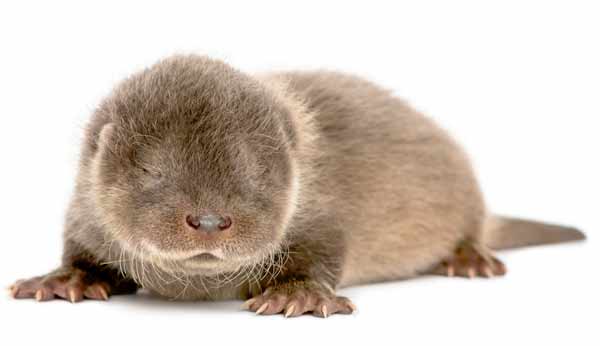
Baby Owls
Baby Owls look pretty scary, actually.
They have the same yellow eyes and they are very furry. They will stay close to the mother Owl in the beginning until they are ready to hunt for mice and creeps on their own.

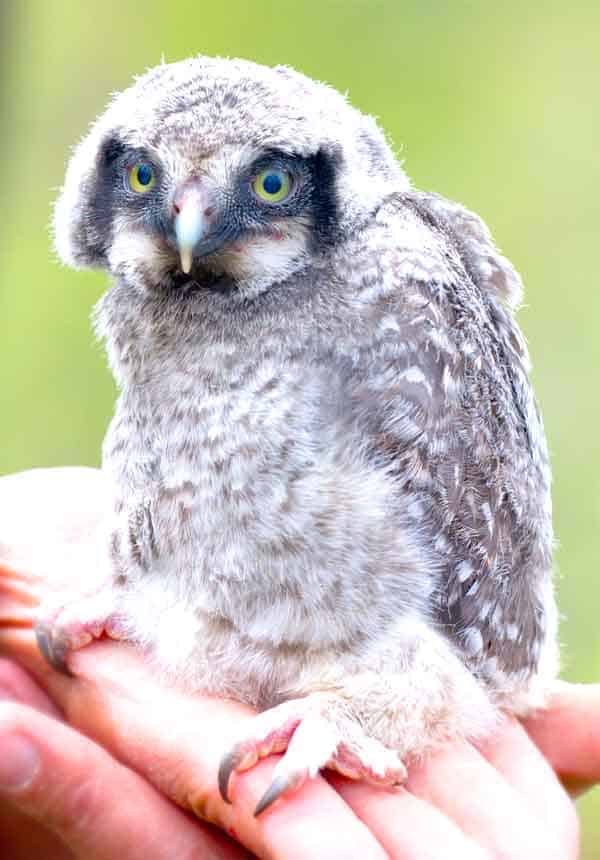

What Do Animals In The Artic Eat?
Many of the Arctic animals are eating other animals. Here’s a list of what some of the animals in this article prefer to eat:
- Wolverine
They are scavengers. They will eat whatever dead animals they can find. They will eat meat and preferably something another predator has killed. - Otters
Otters eat fish. They are amazing swimmers and will catch them in the water - Seals
Seals will also eat fish. - Walrus
They will eat Mullucks, Worms, Sea Cucumbers, and Clams. - Lemmings
They eat berries, grass, roots, leaves and what else they can dig up in the snow. - Musk Ox
The majestic Musk Ox will eat grass, mosses, herbs and other plants they can find. - Killer Whales
Killer Whales eat fish, seals, or even a Dolphin! That’s why they got the name “Killer Whale”. They will hunt down big animals in the sea. - Humpback Whales
This huge whale will eat fish and it loves to hunt. Primarily Salmon, Herring, and Haddocks. But they like a varied meal with lots of different fish. - Blue Whales
Blue Whales are the largest animals on the planet (to have ever lived) so they don’t have any natural enemies. They will eat Krills which are small tiny creatures of the sea that will swim into the gigantic mouth of the whale. They also eat a bunch of other tiny sea creatures just by opening the mouth. - Bald Eagle
The Bald Eagle will hunt and eat small mammals like raccoons, rabbits, and squirrels.
How Do Arctic Animals Stay Warm?
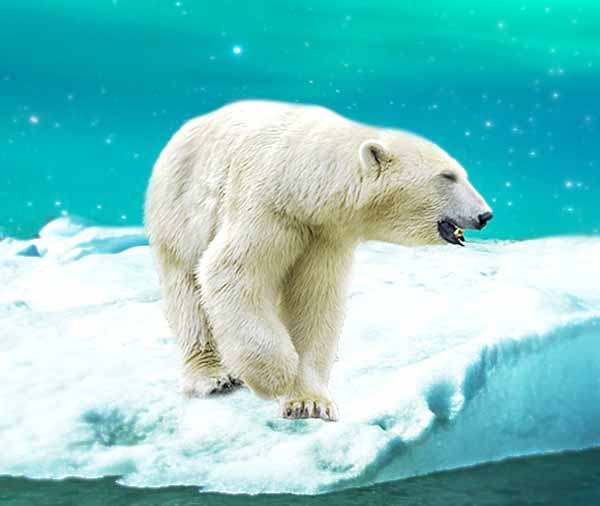
The animals in the Arctic tundra uses different techniques in order to stay warm in extremely cold weather.
The temperatures will reach -58 degrees Fahrenheit (-50 degrees Celsius) sometimes so they need to be good at keeping warm when it really drops.
Here are some of the ways the Arctic animals stay warm:
- Blubber
Seals, Polar Bears, and Walruses have a thick layer of fat called “blubber”. It helps them keep a steady core temperature during the cold months. But the seals will migrate with it’s not breeding season.
They cannot keep warm at the lowest extreme temperatures. The Harp Seals will start having problems when the temperatures drop really low. You can read more here about why animals migrate (and how!). - Winter Fur
The Snow Fox changes fur each season. During the summer, the Snow Fox will have a light brown winter coat (see above) and in the cold season, it changes for a white coat which is warmer. - Hibernation
During the coldest season, some of the animals will go into hibernation.
They do so primarily because it’s hard to find food in the winter months. When they are in hibernation sleep they don’t eat or poop and they slow down their heart rates and they also breathe less frequently.
You can read more here about which animals go into hibernation (and how). - Oily skin
The Polar Bears have an oily substance on their thick fur. It helps them isolate the skin and keep the cold out.
How cold is the Arctic ocean?
The Arctic ocean is cold in the winter months.
The temperature of the surface is always around the freezing point. It’s a little below the melting point (32 degrees Fahrenheit / 0 degrees Celsius) because the water is salty. The salt lowers the melting point a bit by 1-2 degrees.
When you get deeper into the Arctic ocean the water will typically get a little “warmer” (2-3 degrees). The coldest waters are found around Northern Canada.
Is the Arctic a country?
No.
The Arctic area is the most northern area of the Earth.
The area consists of several countries:
- Island
- Greenland
- Northern Sweden
- Northern Norway
- Greenland (part of Denmark)
- Part of Alaska
- Part of Russia.
So as you can see, the Arctic is not a country but a list of regions of which some are countries (like Iceland).
The Arctic is not the same as the North Pole either. The North pole is the central part of the Arctic but the Arctic tundra is much bigger than the area we call the North Pole.

How much does it show in the Arctic?
The Arctic tundra is a rather big area as you can see in this article. Some of the Arctic tundras are found in Greenland and Iceland and here you will find many places with permanent snow.
Snow will fall continuously and over the land with white snow.
The average snowfall is not constant. It will be snowing the most around fall and spring but the wind will carry the snow around and make it hard for people to live in these remote and cold areas
Sources: visitgreenland.com, si.edu,



